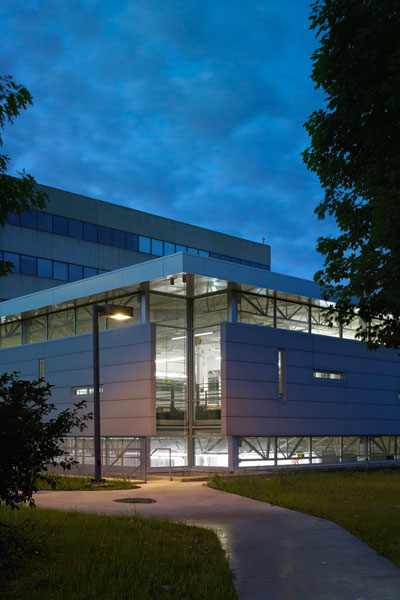Design, Construction & Maintenance
 Iowa State's design, construction and maintenance staff provides students, faculty, staff and visitors with sustainable facilities where they can learn, teach, work and engage with others. This commitment is driven by Leadership in Energy and Environmental Design (LEED), a system that awards certified buildings with sustainability achievement levels of Silver, Gold and Platinum based on eight categories: location and transportation; sustainable sites; water efficiency; energy and atmosphere; material and resources; indoor environmental quality; innovation; and regional priority. With 23 LEED-certified buildings and counting, Iowa State now claims 49% of all LEED-certified buildings within the state's regent university system. Although not all projects are a candidate for LEED certification, Iowa State incorporates sustainable design and features into all of its construction and renovation endeavors.
Iowa State's design, construction and maintenance staff provides students, faculty, staff and visitors with sustainable facilities where they can learn, teach, work and engage with others. This commitment is driven by Leadership in Energy and Environmental Design (LEED), a system that awards certified buildings with sustainability achievement levels of Silver, Gold and Platinum based on eight categories: location and transportation; sustainable sites; water efficiency; energy and atmosphere; material and resources; indoor environmental quality; innovation; and regional priority. With 23 LEED-certified buildings and counting, Iowa State now claims 49% of all LEED-certified buildings within the state's regent university system. Although not all projects are a candidate for LEED certification, Iowa State incorporates sustainable design and features into all of its construction and renovation endeavors.
In 2012, Iowa State hired a Coordinator of Sustainable Design and Construction to provide additional leadership related to LEED certification. The ongoing work of Planning, Design and Construction, along with maintenance teams employed by Facilities Services, also help ensure that all buildings meet LEED standards. These practices and guidelines include installing cost-saving LED lights, planting "living roofs" that reduce storm water run-off, using recycled-content materials such as carpeting, dry wall, ceiling tile and steel to construct buildings, and ensuring all campus buildings are operated and maintained under a standard campus-wide indoor air quality management system, as well as a green cleaning protocol.
For more information about LEED and other building-related projects, contact the University Architect Dan Sloan at drsloan@iastate.edu.
"On campus, it is of primary importance to build our buildings to be more efficient than code. LEED has pushed building codes to improve the energy efficiency of all building types, transforming the design and construction industry. Designers and builders are now aware of the effect space and materials have on occupants and are empowered to challenge the status quo, resulting in an impressive and innovative sustainably built environment."
- Dan Sloan, University Architect